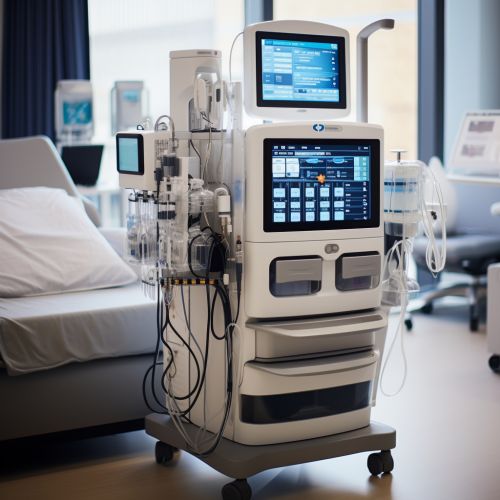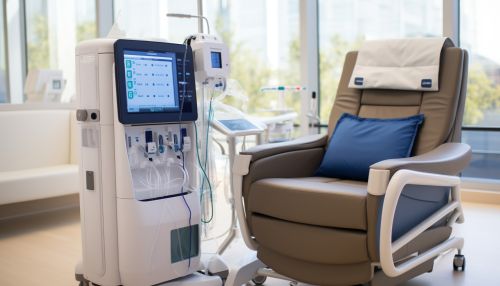Hemodialysis
Introduction
Hemodialysis is a medical procedure that uses a machine to filter waste products and excess fluids from the blood when the kidneys are no longer able to perform this function. This process is vital for individuals with end-stage renal disease (ESRD) or severe kidney dysfunction. Hemodialysis is one of the three primary treatments for kidney failure, the other two being peritoneal dialysis and kidney transplantation.
History
The concept of hemodialysis dates back to the early 20th century, with the first practical application of the procedure occurring in the 1940s by Dutch physician Dr. Willem Kolff. Kolff's initial design, known as the rotating drum kidney, laid the foundation for modern hemodialysis machines. Over the decades, advancements in technology and medical understanding have significantly improved the efficiency and safety of hemodialysis.
Principles of Hemodialysis
Hemodialysis operates on the principles of diffusion and ultrafiltration. In diffusion, solutes (substances dissolved in a solution) move from an area of higher concentration to an area of lower concentration. In hemodialysis, blood and dialysate (a special fluid) are separated by a semi-permeable membrane in the dialyzer (the artificial kidney). Waste products in the blood, which are at a higher concentration, pass through the membrane into the dialysate.
Ultrafiltration is the process by which excess fluid is removed from the blood. This is achieved by applying pressure to force water and dissolved substances through the membrane from the blood into the dialysate.
Hemodialysis Procedure
The hemodialysis procedure involves several steps. First, access to the patient's bloodstream is established, usually through a vascular access site in the arm. This is typically achieved via an arteriovenous (AV) fistula, an AV graft, or a venous catheter.
Once access is established, two needles are inserted into the access site. One needle (the arterial needle) draws blood from the body and sends it to the dialysis machine. The other needle (the venous needle) returns the cleaned blood to the body.
The dialysis machine pumps the blood through the dialyzer, where waste products and excess fluid are removed. The cleaned blood is then returned to the body. A typical hemodialysis session lasts about four hours and is usually performed three times a week.
Complications and Risks
Like any medical procedure, hemodialysis carries potential risks and complications. These may include hypotension (low blood pressure), anemia, bone diseases, high blood pressure, nerve damage, infection, and clotting at the access site. Long-term hemodialysis may also lead to amyloidosis, a condition where an abnormal protein called beta-2 microglobulin builds up in the blood and is deposited in tissues, causing joint pain and stiffness.
Advancements in Hemodialysis
Technological advancements have significantly improved the safety, efficiency, and comfort of hemodialysis. Modern dialysis machines have sophisticated controls and monitoring systems to ensure the safe and effective removal of waste products and excess fluid. Newer dialyzers offer better biocompatibility and efficiency, and improvements in dialysate composition have led to fewer complications and better patient outcomes.


Home Hemodialysis
Home hemodialysis (HHD) is an alternative to in-center hemodialysis that allows patients to perform dialysis treatments at home. HHD offers several advantages, including the flexibility to set a treatment schedule that fits the patient's lifestyle, the ability to dialyze more frequently, and the potential for better clinical outcomes. However, HHD requires a significant commitment from the patient and a care partner, and not all patients are suitable candidates for this treatment option.
Conclusion
Hemodialysis is a life-sustaining treatment for individuals with severe kidney dysfunction. While it is not a cure for kidney disease, it can significantly improve the quality of life for patients with ESRD or severe kidney dysfunction. Ongoing research and technological advancements continue to improve the safety, efficiency, and comfort of this vital procedure.
